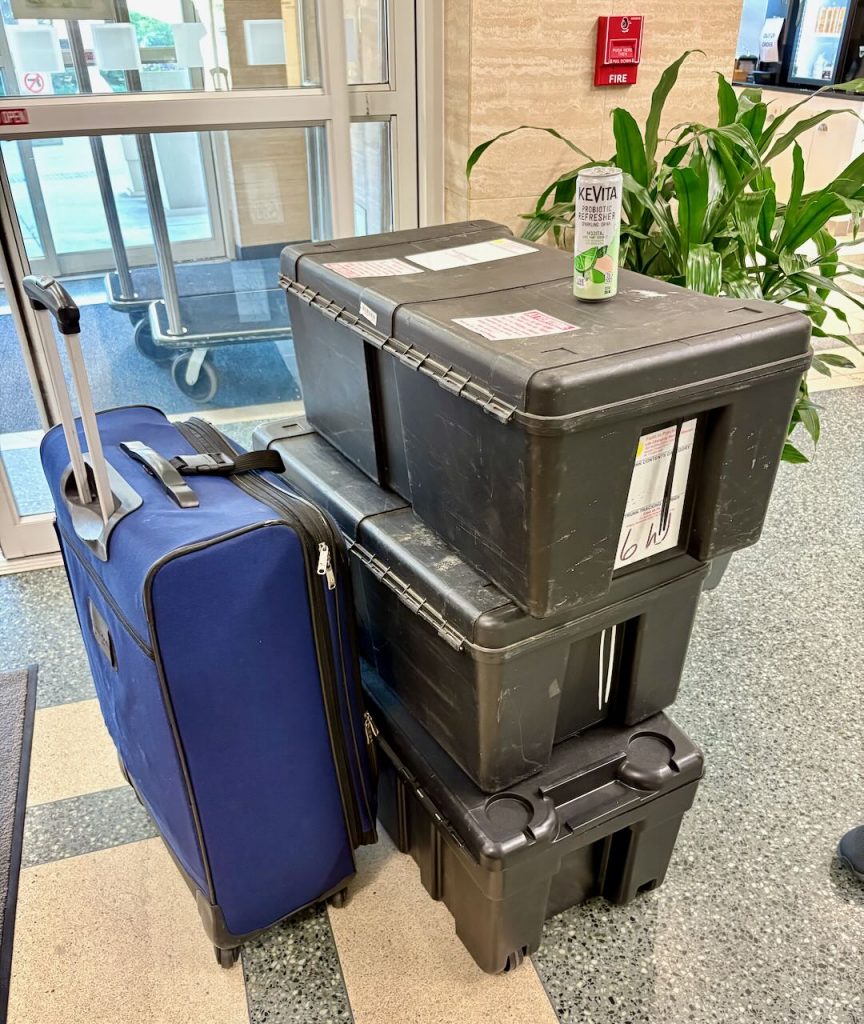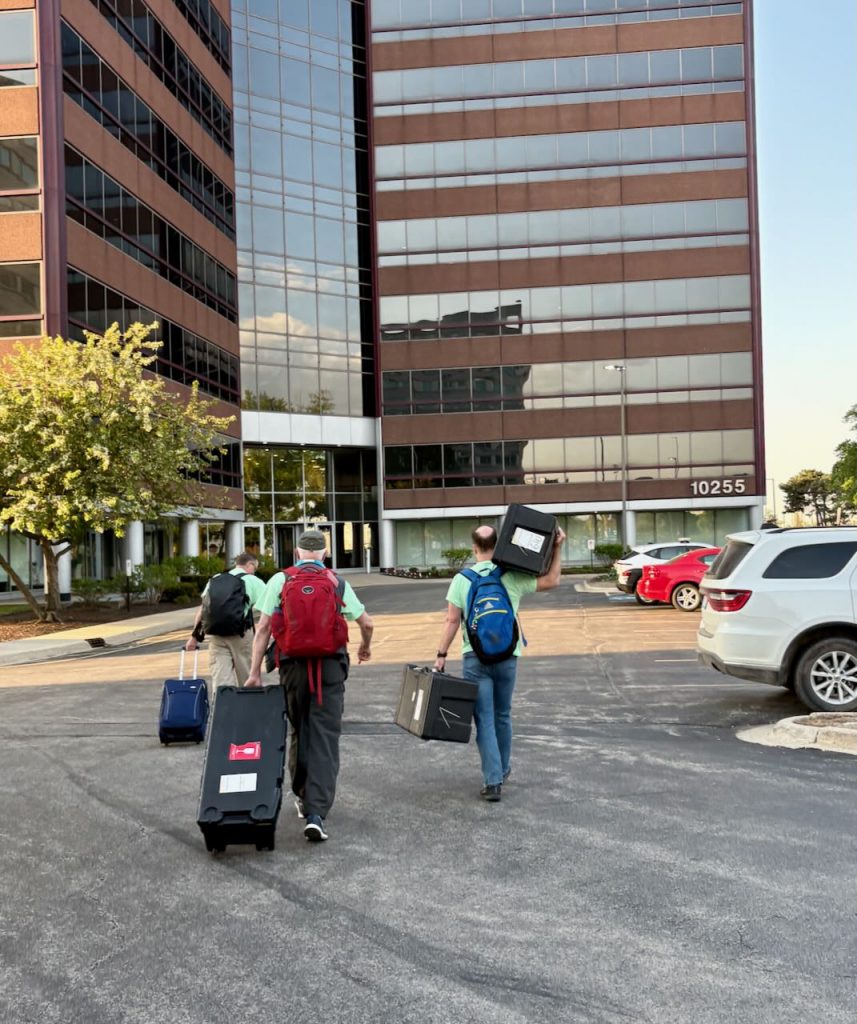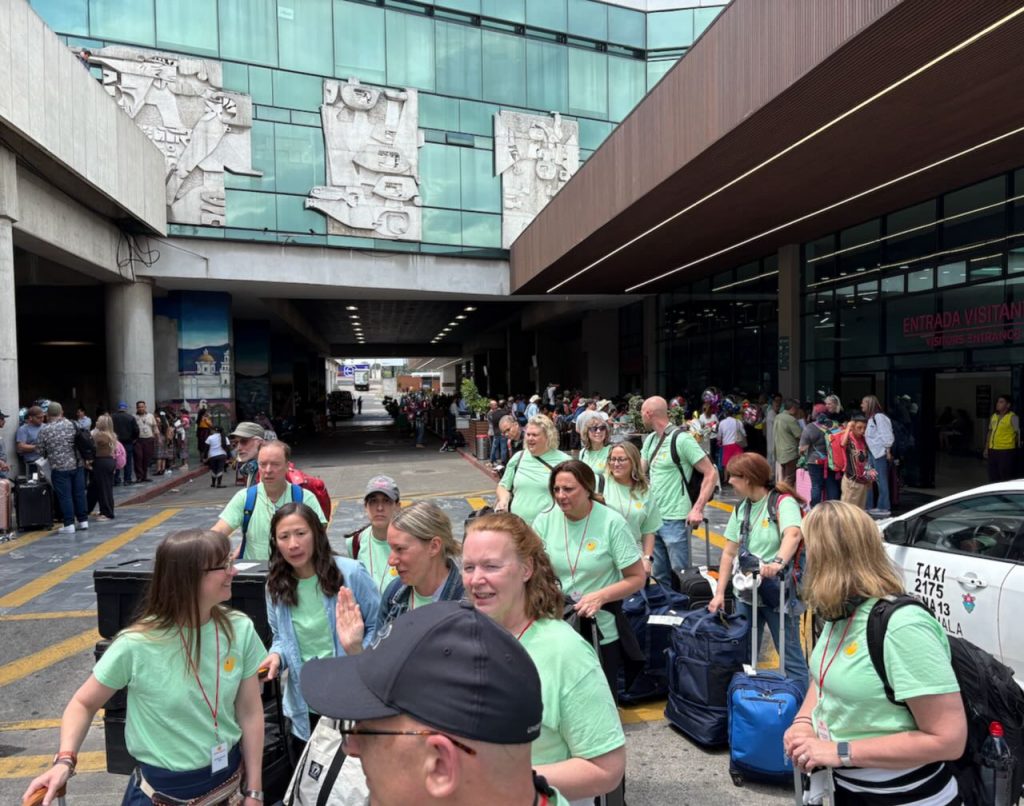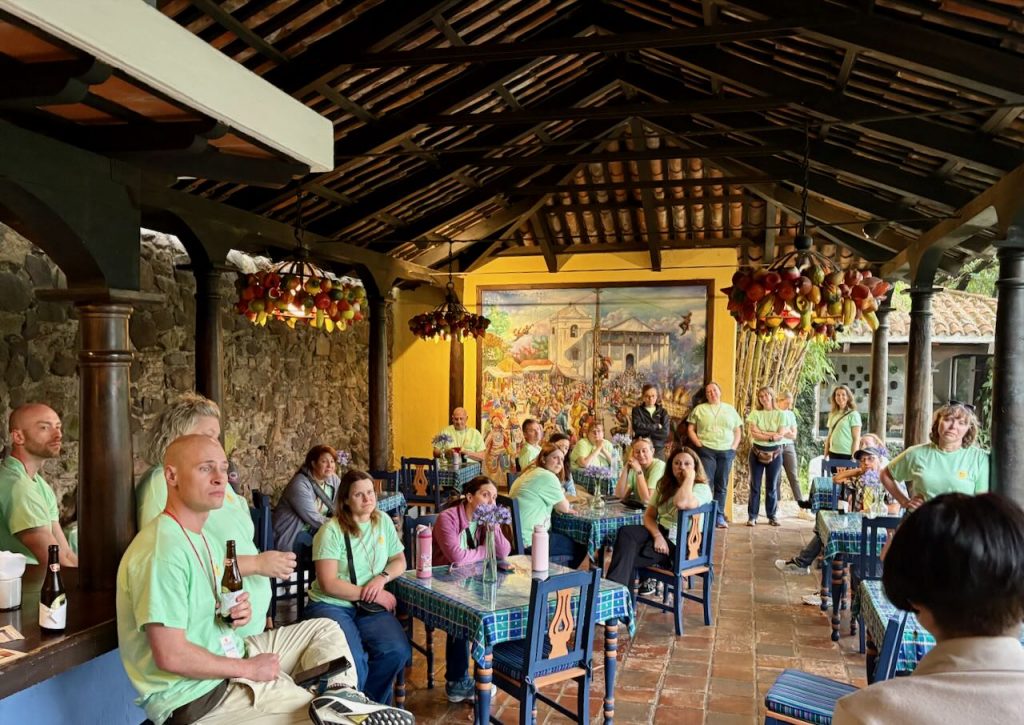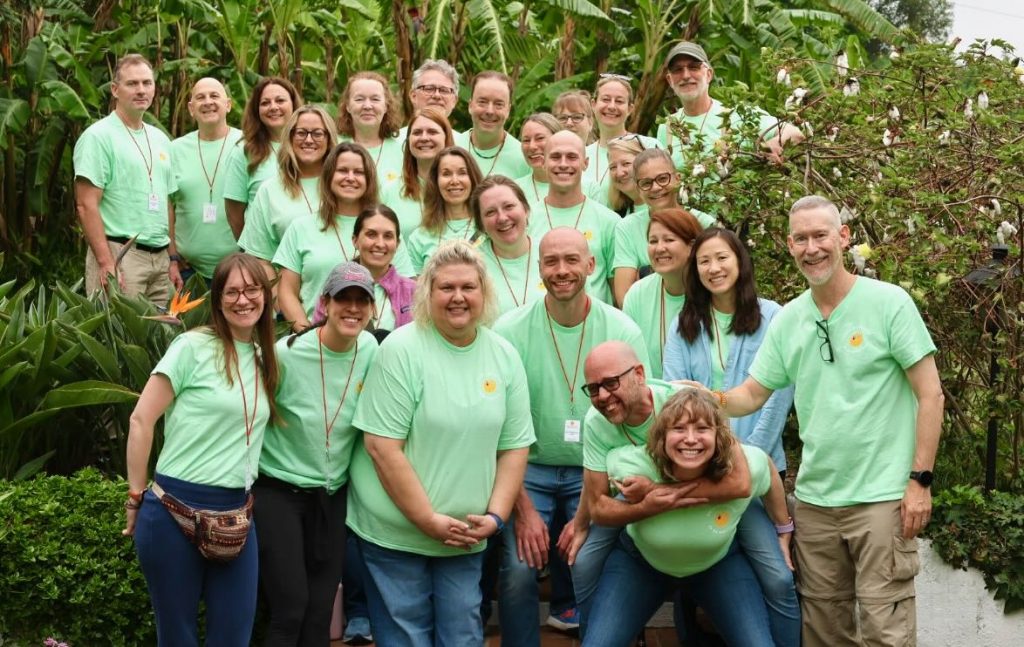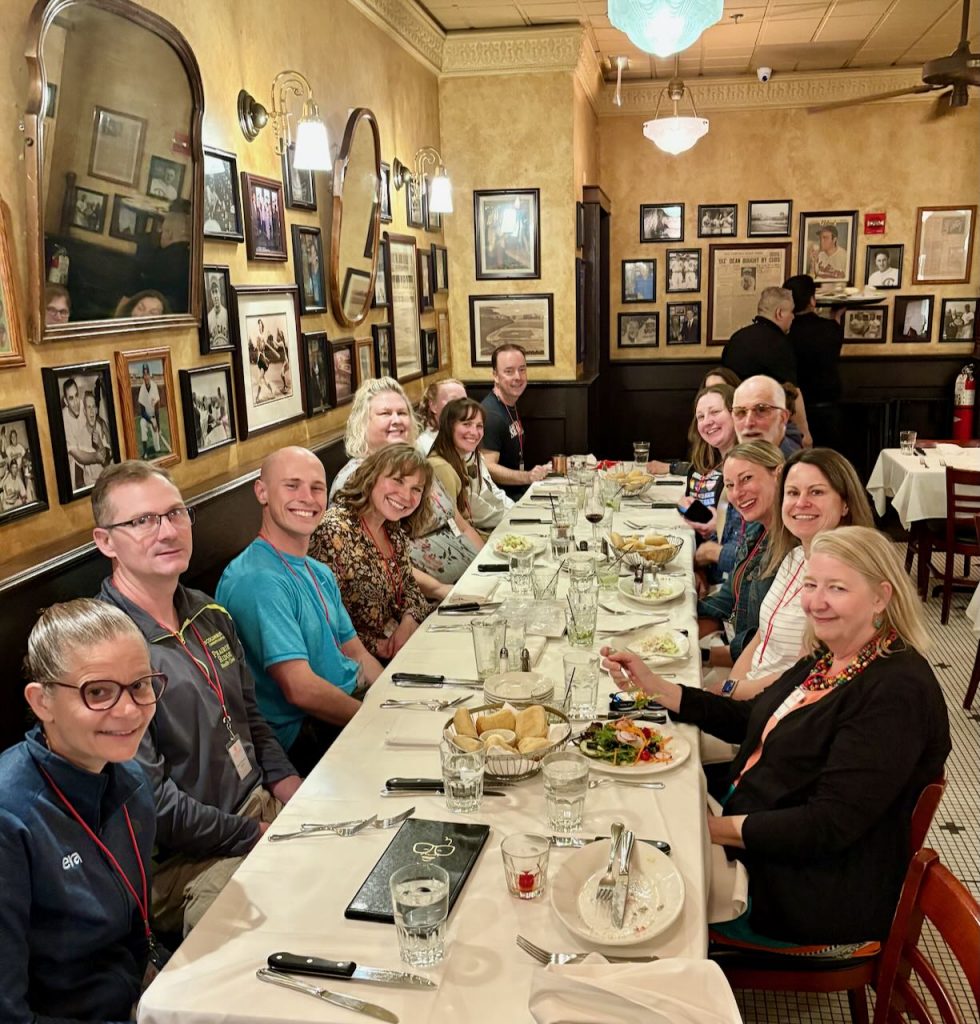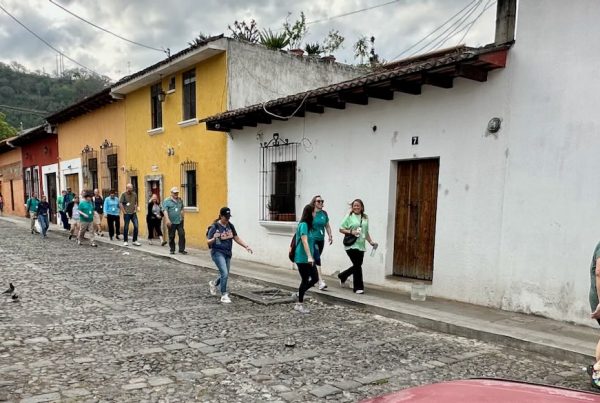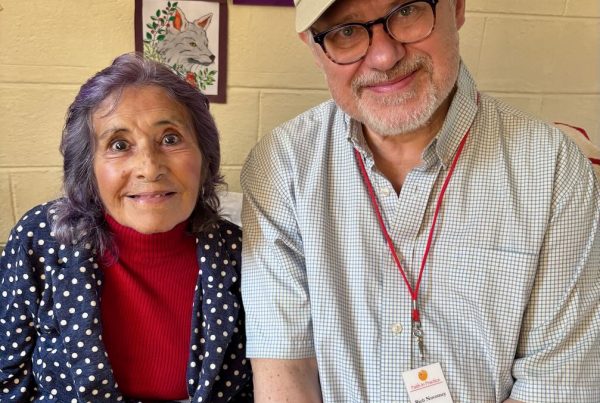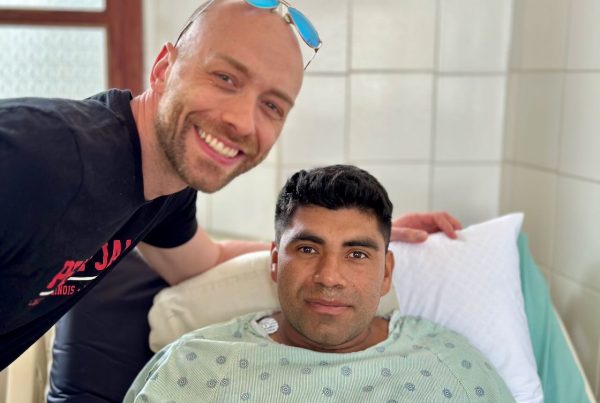Day 1 – Saturday, 10 May
PREFLIGHT IN CHICAGO:
Welcome to the Team Pogo Medical Mission Blog! It’s my privilege to accompany this group of dedicated medical professionals and offer some daily reports and observations.
A total of 28 Americans make up the “Pogo” Medical Mission team for this trip. Our name Pogo comes from our lead physician Matt P. who doesn’t use his real first name, but goes simply by “Pogo,” which is the first part of his last name. Our “Team Mom” is Pogo’s partner, Beata, who does NOT go by Pogo.
Most of our team flew out of O’Hare on Saturday morning. Many of us arrived in Chicago the night before and enjoyed a get-acquainted dinner. The vast majority of Team Pogo have worked together before and I believe there are only four of us “newbies.”
(See photo above of us gathered around the table in Chicago on the eve of our trip.)
Bright and early Saturday morning our mission work began! We hoofed it to the O’Hare transit shuttle, which would take us to our terminal. However, more than just lugging bags or cups of Starbucks, we had to haul three trunks full medical equipment for Guatemala.
(See photos above of stacked trunks at O’Hare and team members hauling supply trunks to the O’Hare shuttle.)
FROM GUATEMALA CITY TO ANTIGUA:
Our 4 hour flight landed us in Guatemala City. Pogo and Beata have things well organized, and there were some Guatemala-based Faith in Practice (FIP) staff there ready to help corral us and get us onto two buses for our 1.5 to 2 hour drive up into the hills to the city of Antiqua.
(See photo above of Team Pogo meandering their way outside Auora International Airport toward our buses.)
FIP is lodging Team Pogo at a lovely old world lodge, Hotel Quinta de las Flores. That night, before our group super, one of FIP’s Guatemala based leaders, Yvonne, delivered an introductory address.
Yvonne spoke fervently and eloquently about how each of the Faith in Practice Medical Missions truly transforms the lives of Guatemalans. She emphasized that the impact is more than simply medical or surgical. More than correcting injuries or congenital conditions, more than healing or providing therapeutic medications, these missions enable many Guatemalans to return to work, to return to taking care of their families, and to take care of themselves.
(See photo above of our group assembled for Yvonne’s message.)
Finally, please see our Team Pogo “Official Photo.” At the end of Saturday, all members of our party had convened from places as far away as Hawaii. We were ready for the week!
RELATED NOTES AND OBSERVATIONS:
Since this is the first day, please allow me to introduce myself. I’m Rich, a blogger for this Team Pogo trip. I’m brand new to the FIP Medical Missions. I’ve done a lot of blogs, but never anything like this. As a newbie to medical missions, and a newbie to FIP, I’ve been trying to wrap my head around the idea of traveling to rural Guatemala to witness this altruistic work. Which means, on Day 1 I’m asking two big questions.
FIRST QUESTION: What is Faith in Practice? I ask this because I hope to disseminate this blog beyond just those associated with FIP.
FIP are an ecumenical Christian organization based in the United States whose mission is to improve the welfare of the poor in Guatemala. They’ve been doing this since 1994. Nowadays they send upwards of 40 medical teams every year (essentially mobile hospitals offering free medical care) into rural Guatemala, where help is most desperately needed. It’s an incredible endeavor requiring skill, knowledge, training, organization, donations, endurance, and a belief that all of us should all be helping our fellow human beings.
Full disclosure: I don’t fit into FIP’s “ecumenical Christian” belief structure, but still they invited me to participate. Why? I imagine it’s because this group believes DOING is more important than TALKING. If one goes back to their radical preacher Jesus, what did Jesus do? He spent his time serving the poor and healing the sick.
In other words, I’m going to witness firsthand a lot of devoted people doing a lot of good. It’s going to be an education for me. Thanks for joining me.
SECOND QUESTION: Why does Guatemala need so much help? It’s vastly complicated and tragic.
ONE POSSIBLE ANSWER FROM A HISTORICAL PERSPECTIVE:
Humans have lived in the Guatemala region since 18,000 BC, and were cultivating maize as early as 3,500 BC. The ancient Mayan Civilization was centered in what is today Guatemala. The Spanish landed in 1523; in less than 100 years what remained of the indigenous Mayan empire was gone. Fast forward through centuries of unrest and conflict; suffice to say that details of this are not germane to what FIP is here for. What is important and central to FIP’s mission is that because of history, much of the rural Guatemalan population today struggles with deep poverty and lack of any available health care.
Viewed through the prism of DATA, the reasons behind this lack of accessible healthcare in Guatemala looks something like this:
Like many countries, there’s an unbalance of wealth distribution. Per the Encyclopedia of Nations, 10% of Guatemalans own half the national wealth.
That unbalance aligns between urban versus rural:
57% of the total population of Guatemala lives in poverty
The indigenous population resides, by and large, in rural areas, where over 80% live in poverty
Geographically, Guatemala is a challenging country: tropical jungles, mountains, volcanoes, earthquakes, hurricanes, climate change. This exacerbates the struggle to modernize Guatemala’s water systems and infrastructure, especially in rural areas. Access to clean water has a profound effect on healthcare.
In terms of data, in rural areas, 56% of the population have no access to clean water. 49% have no access to basic sanitation. Guatemala is working to address this, but it takes time.
Farming is the primary vocation in rural areas. However, like in the United States, family farming is incredibly challenging. A majority of farming families struggle to make a living.
Diets of rice and tortillas (which is all many can afford) have led to a prevalence of Type II diabetes in adults, and malnutrition in children.
Lack of access to dental care exacerbates everything listed above.
Many young people in rural areas can’t advance to secondary education opportunities because they must help with the family farms.
Climate change, mostly because of the pollution of major industrial first world countries, has increased heat and hurricanes, which have led to repeated crop failures.
Tomorrow: Our team of medical professionals sets up for the week.
–Rich, Pogo Team Blogger
(Photos for this entire week are by Jeff E. and Rich N.)


